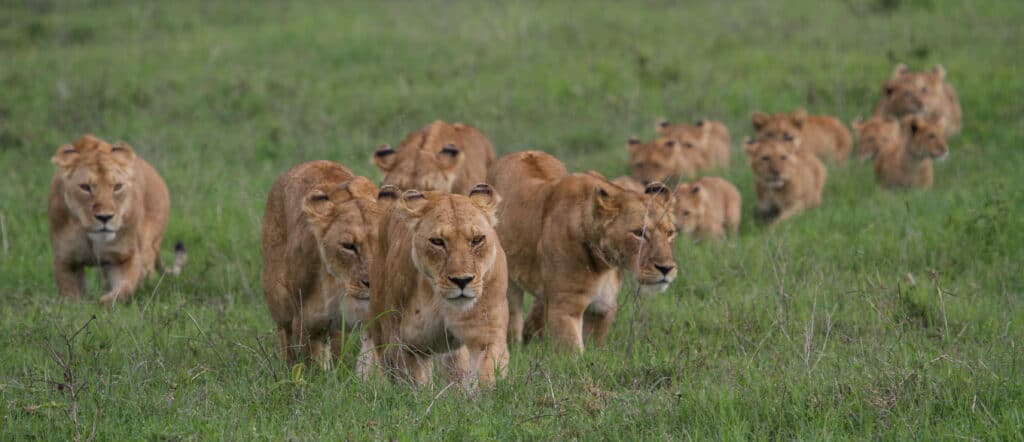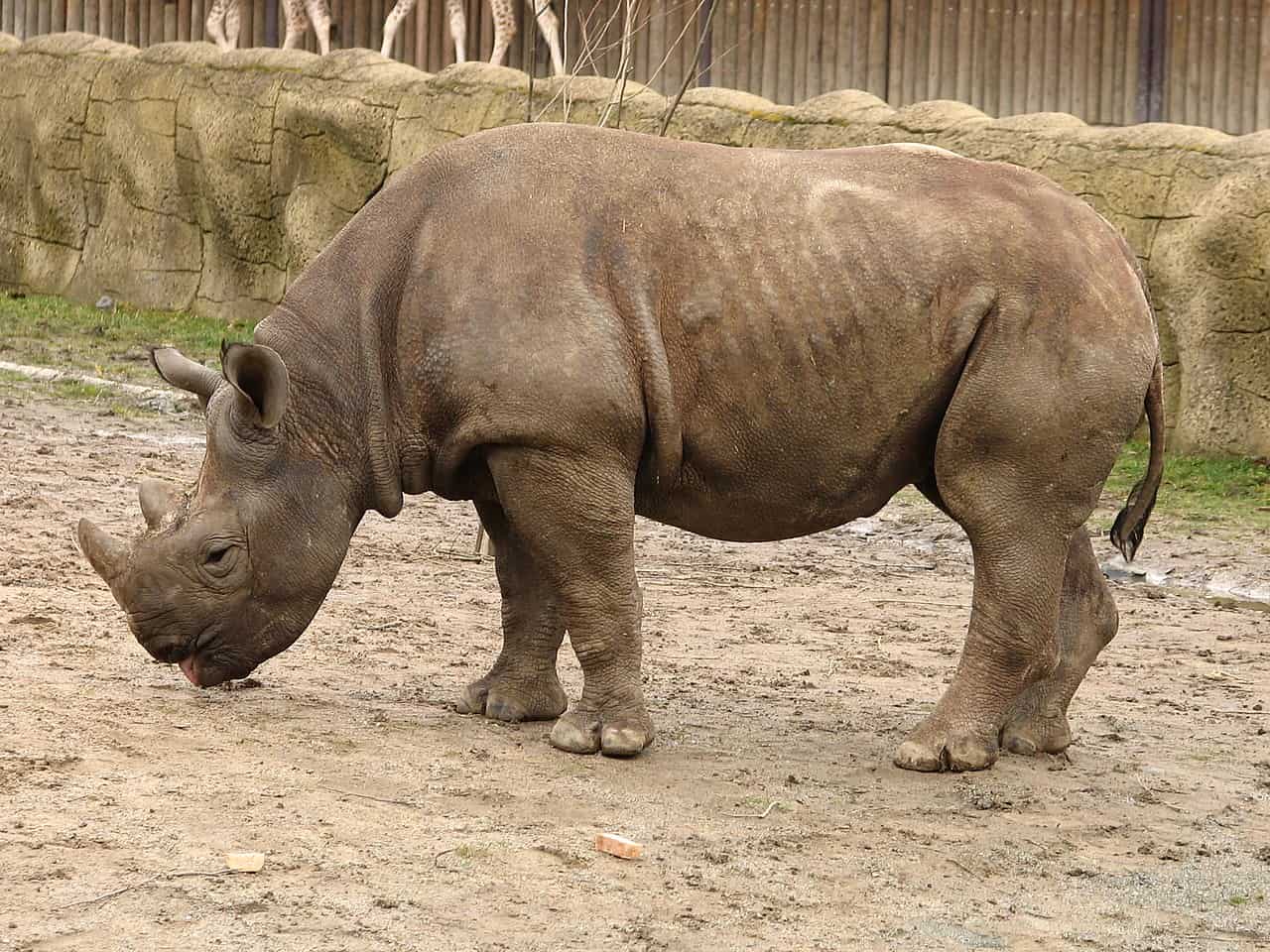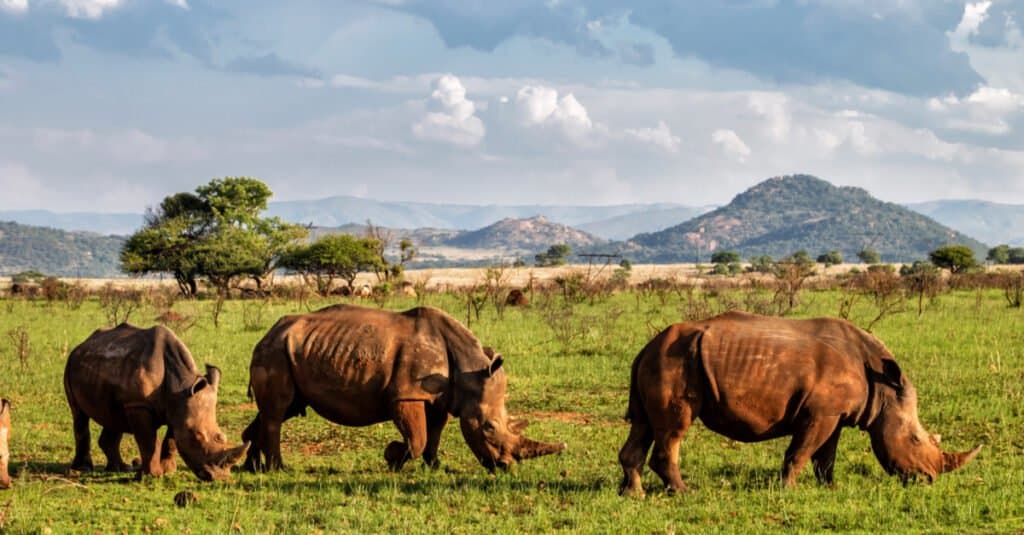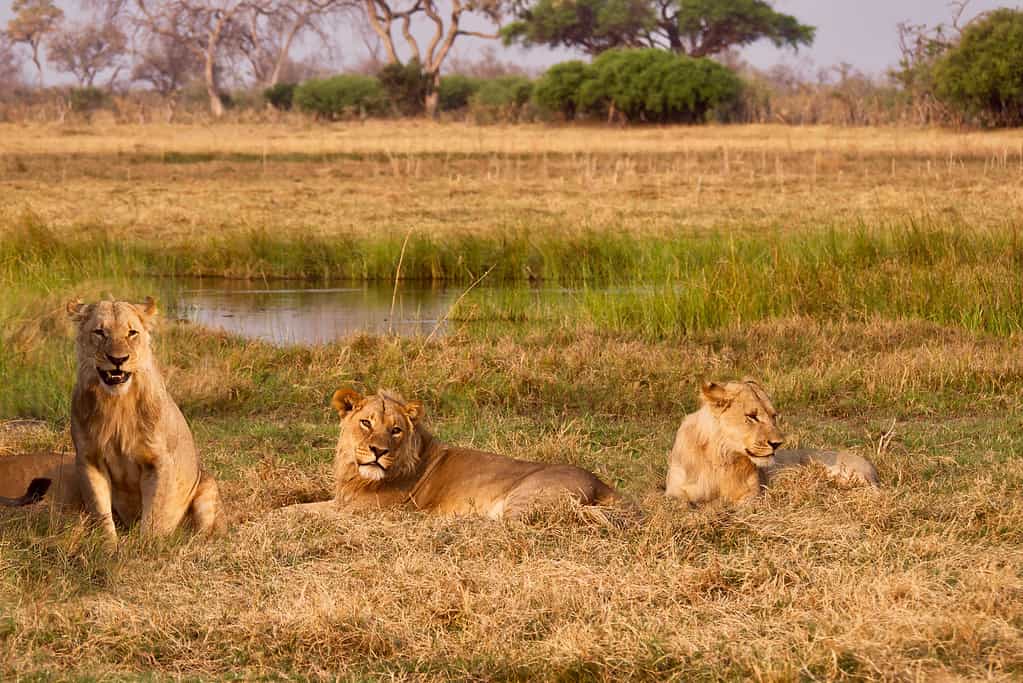Big cats are almost universally recognized as the apex predators of the earth, not counting any of the creatures that live in the ocean. They are intelligent, strong, and fierce hunters, no matter which way you cut it. Further dividing big cats as a group and one cat may just be the most formidable of them all: lions. While a single tiger may be larger, a pride of lions can take down anything that walks. Well, nearly anything. This video shows one of the only things that a pride of lions may fear!
Make Sure You Check Out The Incredible Clip Below!
In a video clip posted in December 2021, we see one of the wildest interactions in nature. The clip shows a pride of lions, nearly 18 strong, trying and take down one of the largest animals on earth: a fully grown rhino. Even more, the entire time the lions are trying to take down the rhino, zebras, giraffes, and water buffalo, watch like it’s the newest movie playing at AMC Theaters!
Lions vs. Rhino

Lions are known to target rhinos; however, it is rare.
©Adalbert Dragon/Shutterstock.com
A single lion is a formidable presence all on its own. Some references claim that a single adult lion has the ability to take down an adult bull gaur weighing nearly 2,200 pounds! When they gather, however, that number gets much larger. Most lion prides are between five and 30 strong. When a large group goes out hunting together, all animals beware!
Even still, a rhino is a large beast unto itself. Could a pride of lions ever take one down? Well, it’s hard to answer. When it comes down to it, an adult rhino can weigh up to 3,000 pounds and is covered in thick armor that can repel even the sharpest of claws. Even still, large lion prides are known to target rhinos, albeit rarely.
When lions target a rhino, it’s almost always a black rhino, the smallest African species. Keep in mind that “small” here is a relative term, and the entire pride of lions could still weigh less than a single rhino. In the video, we see how they go about such a hunt.
A Full Pride Against One Rhino

When a full pride of lions tries to take down a rhino, a black rhino is usually the victim.
©Mistvan, CC BY-SA 4.0, via Wikimedia Commons – Original / License
First, they circle the rhino, hoping that it exposes its back to them. The only shot that a pride of lions has at killing a rhino is if they get open access to the rhino’s back. We all know how deadly the front of a rhino can be! If lions are able to wear a rhino down enough to the point of collapse, they might be able to take it down.
Although the video doesn’t show the ultimate ending of the clip, it’s still incredible to watch. Lions are the most formidable hunters on the African continent, and rhinos may just be the most formidable prey! The most likely turn of events is that the lions find that they are much better off eating one of the spectators (zebras and buffalos) than trying to eat the big guy with the horn.
Where Do They Live?

Rhinos prefer grasslands, savannas, areas of dense vegetation, and rivers or other water sources.
©Henk Bogaard/Shutterstock.com
The habitat of a Rhino is typically found in various grasslands, savannas, and dense vegetation areas. They also like to spend time near rivers and water sources, so they can stay cool during the hot temperatures. Rhinos tend to live alone or with a small herd of 4-5 individuals.
The habitat of a Lion is much different than that of the Rhino. Lions prefer open grassy plains and woodlands where there are large amounts of prey for them to hunt. Male lions usually form prides consisting of up to 30 members who all work together when hunting for food. Lions will use bushes, limestone outcrops, or tall trees as their shelter from the elements.
What Do Lions Normally Eat?
Lions are carnivores, meaning their diet consists of other animals. Lions typically hunt in small groups, with the females doing most of the hunting. They usually choose medium-sized prey such as antelope, zebra, and buffalo. Lions will also occasionally take down larger prey, such as wildebeest or even rhinos! To do so, they must work together to bring down their target. In some cases, one lion will distract the animal while other lions attack it from behind or from a different direction by surprise. Once an animal is caught and killed, lions will feed on it until it’s nothing more than bones before moving on to another target.
Lifespan

The average lifespan of a lion is 10-14 years in the wild.
©Cheryl Ramalho/iStock via Getty Images
Lions in the wild typically live for around 10–14 years, although some have been known to live up to 20. In captivity, however, lions can live much longer – up to 30 years or more. Rhinos in the wild generally have a longer lifespan of about 25–50 years but can also reach 70 and beyond if living in captivity.
The biggest threat to lion and rhino populations is poaching for their horns and skins respectively. Lions are also threatened by habitat loss due to human encroachment as well as diseases such as canine distemper virus, which has decimated several prides across Africa. The number of rhinos killed due to poaching has increased steadily over the past decade, with estimates showing that roughly one thousand rhinos were poached illegally each year since 2013 alone. Conservation efforts are taking place around the world, but it remains a difficult task given how vulnerable these species are both in terms of population size and life expectancy.
The photo featured at the top of this post is © Adalbert Dragon/Shutterstock.com
Thank you for reading! Have some feedback for us? Contact the AZ Animals editorial team.







